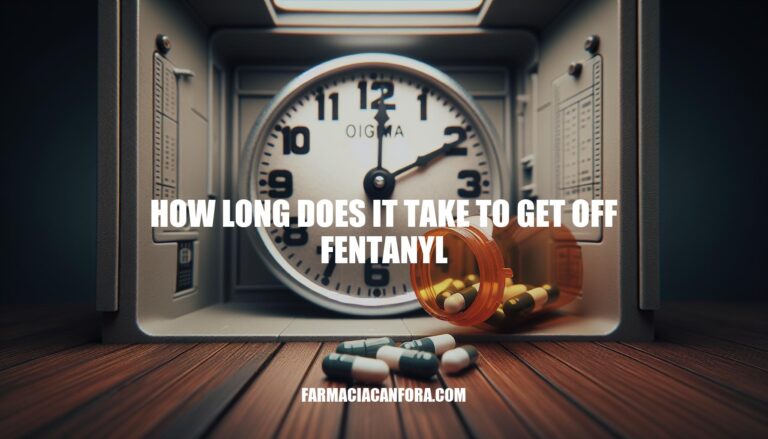


Understanding the timeline for fentanyl withdrawal and recovery is crucial for anyone facing addiction to this powerful opioid. Fentanyl withdrawal can begin as soon as 6-12 hours after the last dose, with symptoms peaking around 1-3 days and typically subsiding within a week. However, the duration and intensity of withdrawal can vary based on individual factors such as the length and amount of use. Recognizing this timeline helps in preparing for the challenges of detox and underscores the importance of medical support during recovery.
Here are the key factors that affect how long it takes to get off fentanyl:
Duration and Frequency of Use: The longer and more frequently someone uses fentanyl, the more entrenched the dependency becomes, making withdrawal longer and more intense.
Dosage: Higher doses of fentanyl lead to more severe withdrawal symptoms, which can prolong the detox process.
Individual Health Conditions: Underlying physical and mental health conditions can complicate withdrawal. For example, individuals with anxiety or depression may experience more intense psychological symptoms.
Method of Administration: How fentanyl is taken (e.g., patches, injections, or pills) can influence the onset and duration of withdrawal symptoms.
Polysubstance Use: Using other substances alongside fentanyl, such as alcohol or other drugs, can complicate and extend the withdrawal process.
Age and Metabolism: Younger individuals with faster metabolisms may process the drug more quickly, potentially shortening withdrawal duration.
Each person’s experience with fentanyl withdrawal is unique, and these factors can interact in complex ways. Seeking medical support can help manage symptoms and improve outcomes.
Here’s a detailed timeline for getting off fentanyl:
Medical detox plays a crucial role in determining how long it takes to get off fentanyl. The process involves safely managing withdrawal symptoms under professional supervision, which can significantly ease the discomfort and risks associated with withdrawal.
Benefits of professional support:
Overall, medical detox not only makes the withdrawal process safer but also more manageable, increasing the chances of successful recovery.
Post-Acute Withdrawal Syndrome (PAWS) refers to a set of persistent withdrawal symptoms that occur after the acute phase of withdrawal from substances like fentanyl. These symptoms can include anxiety, depression, irritability, sleep disturbances, fatigue, and cravings.
When it comes to fentanyl, PAWS can significantly impact the timeline for recovery. While the acute withdrawal phase might last a few weeks, PAWS symptoms can persist for months or even years. This prolonged period of symptoms means that individuals often need ongoing support and treatment to manage these challenges and reduce the risk of relapse.
If you or someone you know is dealing with PAWS, seeking professional help and support groups can be crucial for a successful recovery journey.
Fentanyl withdrawal can begin as soon as 6-12 hours after the last dose, with symptoms peaking around 1-3 days and typically subsiding within a week.
However, individual factors such as duration and frequency of use, dosage, health conditions, method of administration, polysubstance use, and age and metabolism can affect the timeline for recovery.
Medical detox plays a crucial role in safely managing withdrawal symptoms under professional supervision, which can significantly ease discomfort and risks associated with withdrawal.
The benefits of professional support include symptom management, monitoring and safety, and emotional support.
Post-Acute Withdrawal Syndrome (PAWS) can persist for months or even years after the acute phase of withdrawal, making ongoing support and treatment necessary to manage symptoms and reduce the risk of relapse.